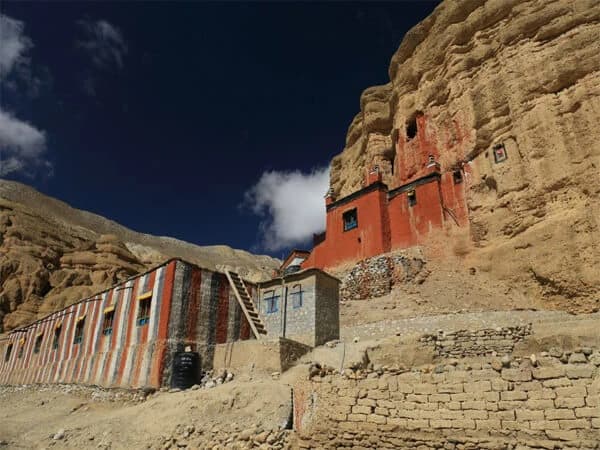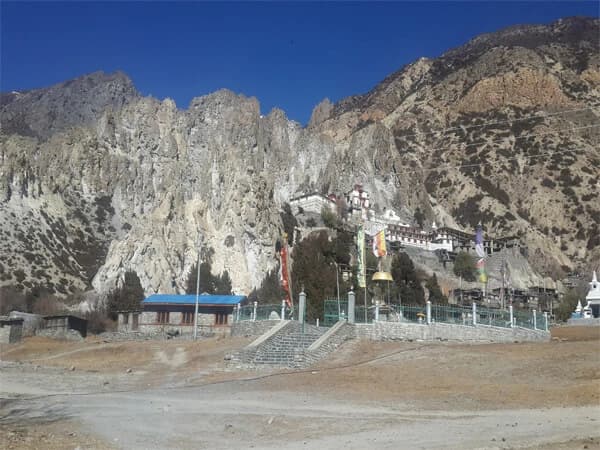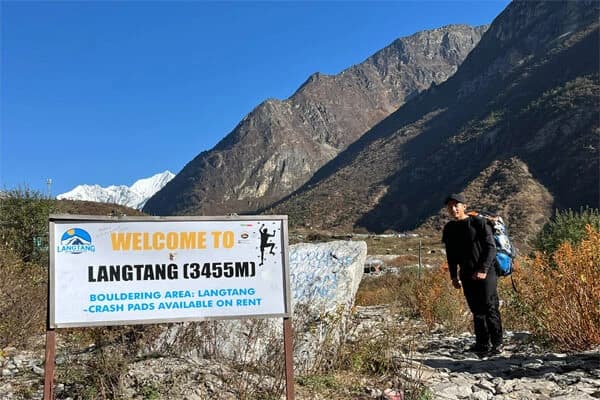Many people are curious about Upper Mustang Trek Difficulty before making travel plans. You can learn more about how simple or difficult this walk is by reading this blog. It provides a straightforward explanation of everything so you can determine whether this adventure is appropriate for you.
The Upper Mustang Trek is a unique trek across Nepal's highlands. It transports you to a high, arid region close to the Tibetan border. Large hills, ancient caverns, and peaceful towns abound in the area. Because it was off-limits to travelers for a long time, it is also known as the "Last Forbidden Kingdom." The trek is considered quite difficult by some. It's not too hard, according to others. Who is correct, then?
This Upper Mustang Trekking Difficulty blog examines a variety of topics, including the trail's elevation, daily walking distance, weather, road conditions, and the physical requirements for the journey. It also offers advice on how to make your trip more enjoyable and easy.
This article might help you prepare and boost your confidence if you're considering a trip to Upper Mustang. Let's begin by discovering what makes this walk unique among Nepal treks.
What Makes the Upper Mustang Trek Unique
The Trekking to Upper Mustang is quite unique. It differs from a lot of other Nepal treks. This is why it is unique:
Dry and Rocky Land
Upper Mustang resembles a parched desert. This Mustang region in Nepal contains dry rocks, sand, and little rain, in contrast to neighboring regions that have snow-capped mountains and verdant forests. It's sunny and occasionally breezy outside. This is because the majority of the rain is blocked by the mountains. As a result, the nature you will witness here is quite different.
Close to Tibet Influence Land and Its Culture
Tibet is a region in China that is adjacent to the Upper Mustang. As a result, the locals live similarly to Tibetans. They follow ancient customs and traditions, dress traditionally, and speak a language that is related to Tibetan. Numerous stunning antique monasteries (temples) and vibrant prayer flags may be seen atop the mountains. There is something unique and serene about this culture.
No Crowds on the Trail
Numerous visitors and trekkers participate in Nepal's other well-known treks, such as the Annapurna base camp or Everest base camp paths. Upper Mustang, however, is less congested. Because entrance is controlled by the government, only a few number of people are able to come each year. This implies there won't be any large crowds when you stroll peacefully and take in the scenery.
Jeep Roads and Rugged Paths
There are a combination of rough pathways and jeep roads on the Upper Mustang trail. So Upper Mustang Jeep Tour is avaliable now. Jeep roads are uneven, rocky dirt roads that jeeps may go on. You will occasionally walk on these highways and at other times on tiny, ancient paths that were once frequented by traders. The routes pass across broad valleys, arid hills, and tiny communities. It's like traveling back in time when you walk here.
Stunning Views of the Mountains and Valleys
Despite the arid conditions, Upper Mustang Hiking offers breathtaking views. You will see huge valleys, expansive skies, and towering snow-capped mountains in the distance. The old walled city of Lo Manthang, which appears to be from another planet, is among the most stunning locations. A stunning image is produced by the hues of the buildings, the sky, and the rocks.
Adventure and Mystery
Upper Mustang feels like a secret place since it is so isolated and peaceful. Many tourists are drawn to it because of its enchanted atmosphere. Trekking here is similar to embarking on a true journey, where you can discover new locations and discover a different way of life.
Walking among the mountains is only one aspect of the Upper Mustang journey. It's about experiencing a unique culture, meeting interesting people, and seeing a different world. This trek is genuinely unique because of that.
Factors that make Upper Mustang Trek difficult
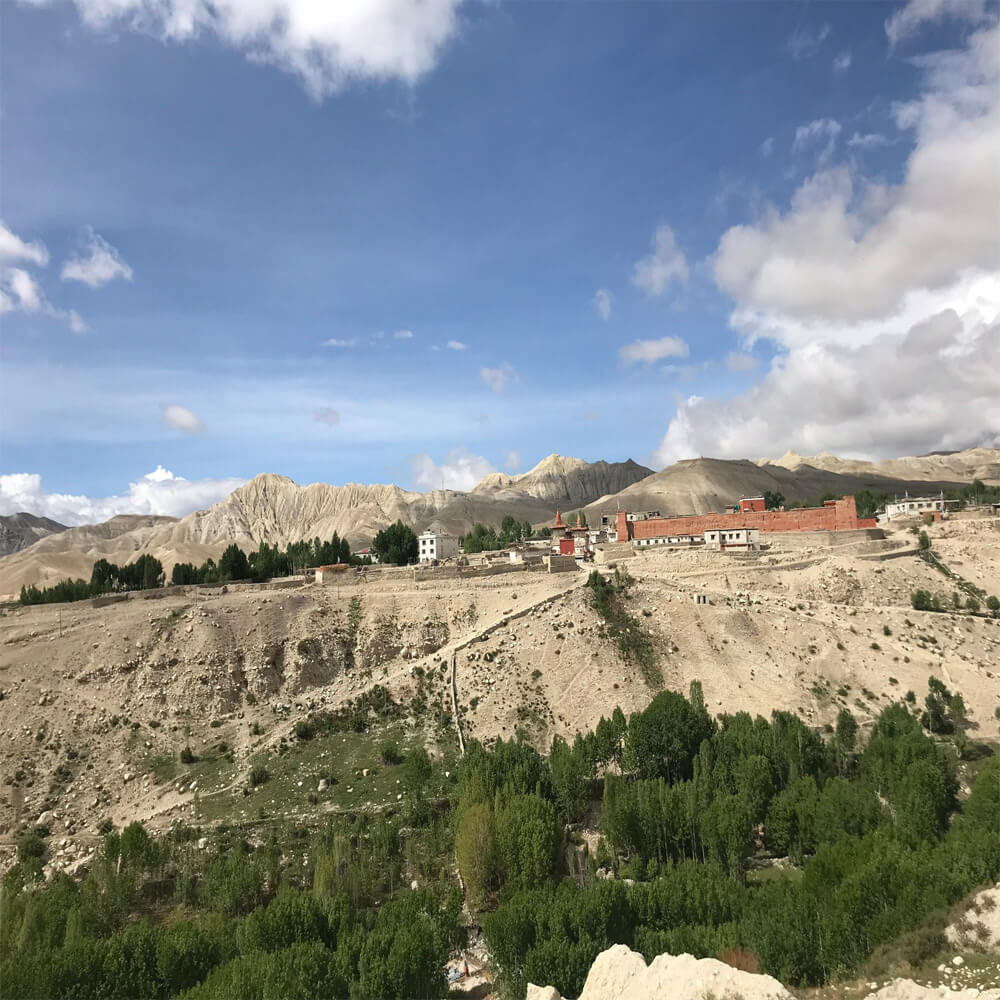
High altitude (up to 3,950 meters), dry air, strong winds, and dusty routes are the primary factors that influence difficulties. Cold mornings and the scorching sun during the day can sometimes be difficult. In spring and fall, when the weather is dry and stable, trekking conditions are easier.
Elevation and Altitude: Is It Too High?
People frequently worry about how high the trail climbs when they hear about trekking in the mountains. Some people have nausea and respiratory difficulties when walking at high altitudes. Let's examine the actual elevation of the Upper Mustang journey and determine whether it is something to be afraid of.
How High Do You Go on the Upper Mustang Trek?
You reach a high-altitude, arid desert region behind the massive Himalayan ranges on the Upper Mustang Trekking. Because the clouds don't deliver much rain there, the area is known as a "rain shadow." Between 2,800 meters (9,200 feet) and 3,800 meters (12,500 feet) above sea level, the majority of the trail is located. Lo La Pass, which is approximately 3,950 meters (almost 13,000 feet) high, is the trek's highest point. Although that may appear lofty, it is really lower than locations such as the Annapurna Circuit or Everest Gokyo Chola pass trek.
The upside is that you don't ascend too quickly or too high. In order to give your body time to adjust to the altitude, the track climbs gradually. The trail is frequented by many people with little difficulty. However, since each person is unique, caution is still necessary.
What Is Altitude Sickness and How Can You Stay Safe?
You may still have altitude sickness even though the Upper Mustang trek in Nepal isn't too high. This occurs when your body doesn't obtain enough oxygen in high areas. You may have nausea, headaches, lightheadedness, or extreme fatigue. For this reason, it's crucial to take things gradually, stay hydrated, and take breaks when necessary.
Walking uphill in a Mustang usually makes most people feel a little out of breath. That is typical. However, you should inform your guide and take some time off if you feel extremely ill. To aid them manage altitude, some people take medication. Before heading further, it's a good idea to spend a night or two in Jomsom or Kagbeni.
Ultimately, most individuals find the elevation in Upper Mustang to be manageable. If you are careful and listen to your body, you will be just fine. Many people, even older adults and teenagers, finish the trek without any problems.
Trail Conditions: Roads, Dust, and Daily Distance
Small trails through lush forests or snow-capped mountains may come to mind when you think of trekking to Upper Mustang Restricted area. The climb up Upper Mustang, however, is a bit different. It passes through a stony, arid area that resembles a mountain desert. This pathway is unique because it combines new highways with historic paths. Let's discuss how it actually feels to trek here.
Walking on Jeep Roads and Rocky Trails
There are now jeep roads in many areas in Upper Mustang. You will therefore be walking on broad dirt roads that are suitable for vehicles such as cars and jeeps. Due to the road's lack of steepness, the walk may feel simpler. However, because it's not a natural route, it might occasionally feel dull as well. There are places when you will have to travel on rough or uneven terrain, particularly close to tiny communities. For hundreds of years, people including traders on horses and mules used these ancient pathways.
The walking is not too difficult because of these roads and paths, although after a few hours your feet may feel fatigued. The ground is sandy, dry, and occasionally covered in tiny stones. Wearing sturdy trekking shoes will keep your feet pleasant and safe.
How Long and How Far You Walk Each Day
You will walk for roughly 5 to 7 hours on the majority of the trek days. You don't walk quickly, but this may seem like a lot. You move slowly and leisurely. In between, there are pauses for food, tea, or relaxation. The good news is that, unlike other Nepali hikes, there aren't many hard climbs. However, because the country is open and dry and the sun can be intense, some days may feel a little long.
The wind is one thing to keep in mind. Strong winds typically begin in the afternoon at Upper Mustang. For this reason, the majority of trekkers begin their walks early in the morning. You can stop before the wind makes walking more difficult if you do that.
Physical Fitness: Who Can Do It?
People frequently ask themselves, "Do I have to be very strong or super fit to do this trek?" when they hear about trekking to Upper Mustang. The Upper Mustang Trek does not require athletic ability, so the answer is no. However, you must be healthy and prepared to go for daily walks. In comparison to other treks in Nepal, this one is not particularly challenging. There are no extremely high mountains to traverse or difficult ascents. Being ready is helpful because walking for several days in a row might be exhausting.
It's Not Only for Young or Athletic
To enjoy the Upper Mustang Hiking, you don't need to be young or sporty. Teenagers and even people over 60 have done it, among others of all ages! The most important thing is that you can walk steadily and slowly for five to seven hours every day. There are no sections of the trail that require the use of ropes or other specialized equipment, and it is not overly steep. Small rough trails or dirt roads make up the majority of the route. You can take breaks along the way if you become exhausted. You don't have to hurry.
The trek is doable by many people who lead regular lives, going to work or school and occasionally taking walks. You can also enjoy this experience if you are in good health and can walk for a few hours without experiencing any issues.
Being Prepared Increases Your Enjoyment
It's a good idea to get your body ready a bit before starting the walk. The journey will be easier if you climb stairs, take daily brief walks, or engage in mild exercise. To help your body adjust to bearing weight, you can also try walking while wearing a backpack.
The weather and dry air can make walking a little more difficult, even though the trek is not particularly difficult. Drinking water and moving gently are therefore crucial. You'll feel resilient and content as you go if you pay attention to your body and take your time. Is the Upper Mustang Trek something you can do? Yes, if you're in good health, eager to explore, and willing to walk!
Logistics That Simplify the Trek
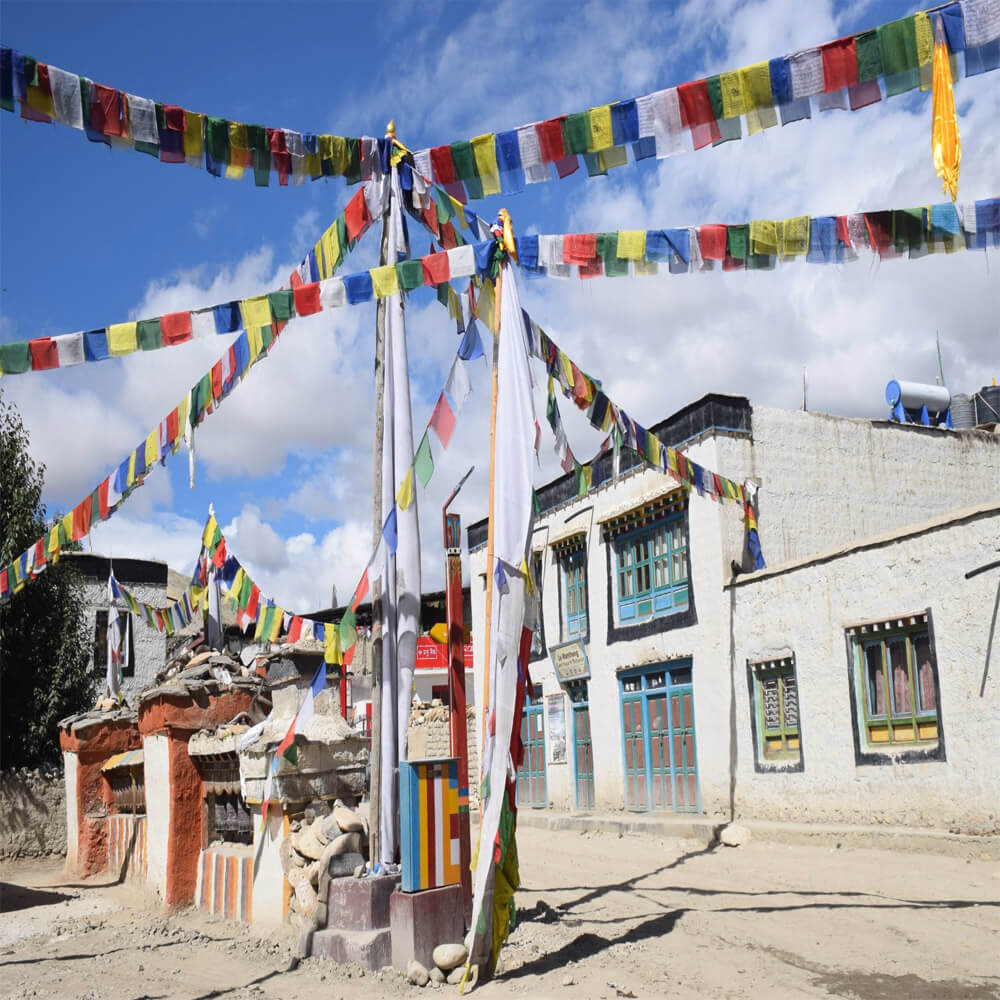
A trek can occasionally feel more difficult if you are unsure of what to anticipate. However, there are a few features of the Upper Mustang Trek that genuinely make it simpler for tourists. These useful items are referred to as "logistics." Let's examine what they are and how they contribute to a more enjoyable and seamless journey.
Instead of tents, you sleep in teahouses.
The fact that you are not required to sleep in a tent is one of the best things about the Mustang Trek. Small lodges, often known as "teahouses," may be found in practically every community along this walk. A teahouse is a simple location for hikers to stop, eat, and sleep. Warm blankets, a bed, and occasionally even hot tea and food are provided. This eliminates the need for you to bring along bulky cooking equipment or a tent.
Meeting locals and other tourists makes sleeping at a teahouse more enjoyable. After a day of wandering, it seems cozy and secure. Other treks, such as camping treks, need you to pack a lot of items. However, the teahouse system in Upper Mustang makes traveling lighter and easier.
You can take a Jeep on some parts
The fact that rocky roads now connect several sections of the Upper Mustang path is another benefit. This implies that you can ride a jeep for a day or two if you are too exhausted or pressed for time. This rests your legs and speeds up your progress to the next village.
Before beginning their journey, many hikers take a plane to the town of Jomsom. Many trekking days are saved by one quick flight. If you're not prepared to walk on the first day, you can even take a vehicle from Jomsom to the beginning village.
Some folks would rather walk the entire distance rather than use a jeep. That's okay too! However, it's comforting to know that the road and jeeps are available in case you ever need assistance. Therefore, Upper Mustang is not as difficult as you might assume, despite the fact that it is far away and seems like a different universe.
Weather and Season Challenges on the Upper Mustang Trek
The weather might be unpredictable, but the Upper Mustang Trek is stunning. Your walk will be safer and more enjoyable if you know when to go. Let's examine the ideal time to visit and the anticipated weather.
Best Seasons for Upper Mustang Trek
In Upper Mustang, spring (March to May) and fall (September to November) are the best seasons for trekking to Mustang. The weather is dry, the sky is clear, and the temperature is neither too hot nor too cold throughout these months. The desert and mountain vistas are breathtaking. Additionally, you can meet locals and observe their way of life.
What About Monsoon Season?
In the summer months of June through August, Nepal receives a lot of rain. We refer to this as the monsoon season. However, Upper Mustang receives little rain since it is under a rain shadow region in Nepal. The sky might still be clear and the trails remain dry even in the heat. Because of this, Upper Mustang is one of the few Nepal treks that can be completed during the monsoon season. Just be prepared for a few days with a lot of clouds and wind.
What Happens in Winter?
Upper Mustang experiences extremely cold temperatures from December to February. Snow can fall on the communities and mountains. In the winter, many teahouses and guesthouses close. There may be less people around and certain roads may be blocked. You must pack thick clothing and be prepared for the cold if you truly wish to travel in the winter. However, it is feasible!
Be Ready for Strong Wind
You should be aware of the high wind at Upper Mustang. The wind picks up speed every afternoon, occasionally resembling a sandstorm. Starting your stroll early in the morning and getting to your next destination before the wind picks up is the best approach to avoid this.
Make sure you prepare appropriately and check the weather before your trek. It will be very beneficial to have a warm jacket, sunglasses, a sun hat, and a scarf or mask to protect your face from dust.
Mental Challenges
In Upper Mustang, trekking involves more than just climbing hills and traveling great distances. It has some mental difficulties as well. This implies that it may also be difficult for your emotions and thinking. It can also be one of the most incredible things you ever accomplish, so don't worry!
You Are Far from the Busy World
Upper Mustang is remote from towns and quite peaceful. Large stores are absent, traffic is quiet, and the internet is unavailable in many areas. This may feel weird at first. You may miss your favorite snacks, TV, or phone. However, you will soon begin to appreciate the stillness. You feel at ease and content when you are surrounded by mountains, tiny towns, and an open sky.
The Land Looks Dry and Empty
The path winds across a rough dry desert. Unlike in other regions of Nepal, there are no green forests here. You might wander for hours on certain days with few people, plants, or animals in sight. It can be a bit isolating. It's unique, though, like stepping on the moon! Red cliffs, old caves, and vibrant prayer flags fluttering in the breeze are all visible.
Strong Winds Can Be Hard
Strong winds sweep through the valleys in the afternoons. The wind can throw dust in your face and make walking more difficult. For this reason, the majority of people begin walking early in the morning. Then, it's cooler and easier.
You Walk for Many Days
10 to 14 days are needed for the trek. You walk for 5 to 7 hours every day. Your legs may become fatigued. You may have back pain. However, you feel proud when you arrive at a picturesque settlement or a mountain pass. "Wow, I really did this!" will be your first thought.
It Feels Like a Real Adventure
There may not always be large crowds or signs. You cross bridges, stroll along ancient stone paths, and adhere to the instructions. You sleep in tiny guesthouses, eat humble meals, and gaze at the stars at night. The journey is made exceptional by these small details.
In the End, It Feels Amazing
The journey teaches you to be brave and strong, despite the fact that it might be challenging at times. You'll remember the thrill of accomplishing your goal, the beauty of the area, and the kindness of the locals. Because of this, the Upper Mustang trek is a journey for your heart and head rather than just a walk.
Upper Mustang Trek for Beginners
The Upper Mustang Trekking is an excellent option for beginners who wish to experience trekking in Nepal. You don't have to be an expert in mountains, and it's not too difficult. All you need is a love of walking and good health.
The trail is not too steep for the most part. You spend five to seven hours a day walking. The route passes across broad lowlands, tiny villages, and arid peaks. There are no rivers to cross or large woodlands. You don't have to cook or sleep in tents since you stay in little guesthouses known as "teahouses."
Though not as high as Everest Base Camp, the highest peak is roughly 3,950 meters. The high altitude may make some individuals feel a little exhausted, but as long as you walk carefully and stay hydrated, it should be fine.
The dry, dusty path and the afternoon's high winds are the only challenging aspects. However, it really helps if you start walking early in the morning and wear a mask or scarf.
Even beginners can enjoy the Upper Mustang Trek if they have a good guide and a positive attitude. It is a serene, lovely location that is rich in adventure and culture.
Difficulty Level of Upper Mustang Trekking Route
It's a moderately challenging trek to Upper Mustang. Unlike Everest, it lacks high altitudes and difficult climbs. The majority of the trail is across a windswept, dry terrain with mild hills. A daily walk lasts five to seven hours. Beginners who enjoy walking and have a basic level of fitness can do it.
Upper Mustang Hiking Experience Required
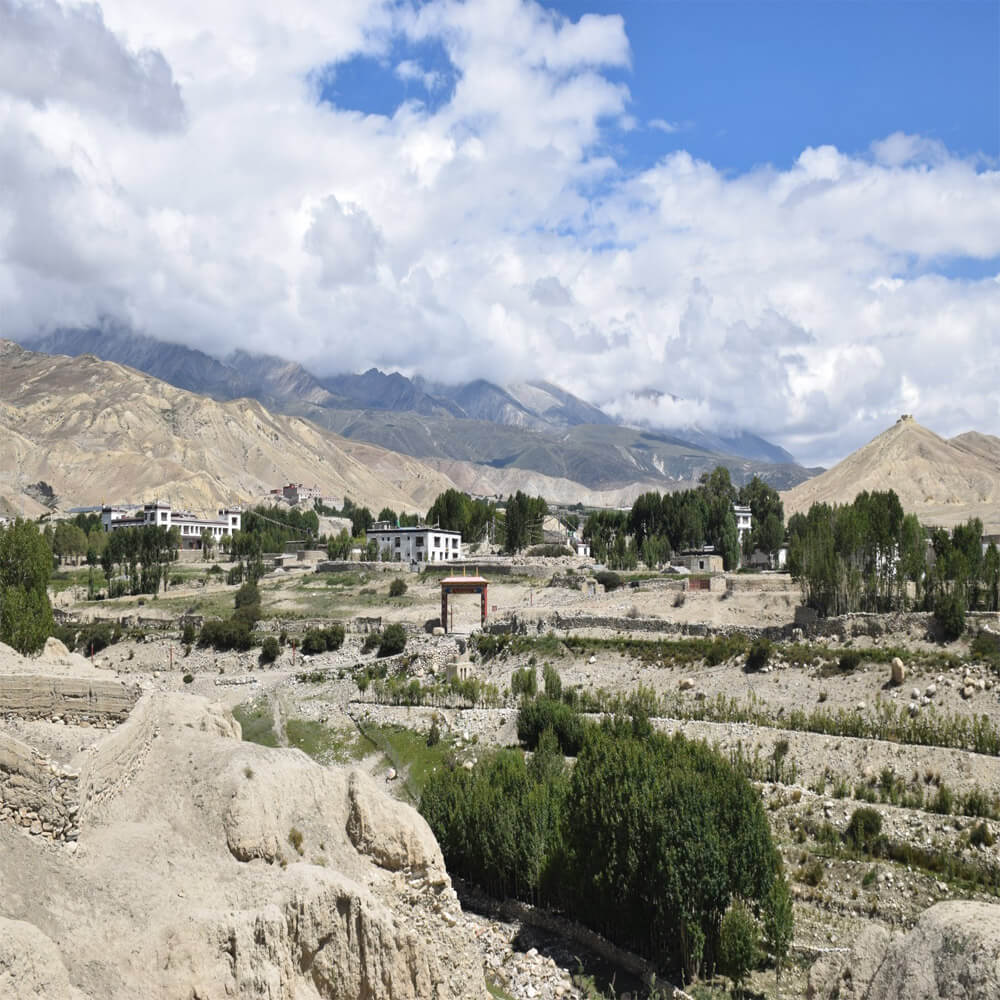
The Upper Mustang Trek does not require prior trekking expertise. It can be finished by beginners who are in good health and have a positive outlook. It helps to be able to handle different weather conditions and walk for several hours each day. The trip might be more pleasurable and easy with a guide.
Tips to Make the Upper Mustang Trek Easier
You don't need to be a professional mountaineer to complete the Lo Manthang trek, but it is a tremendous adventure. It can be much simpler and more enjoyable if you plan ahead and heed some wise advice. Here are a few easy suggestions to make the hike more enjoyable:
Go Slowly and Take Breaks
Rushing is not necessary. Your body can better adapt to the elevated areas if you walk at a leisurely pace. Stop and take a break if you're exhausted. Breathing deeply and drinking water are also beneficial. It's your trip, not a race.
Start Early Each Day
In the afternoon, the wind in Upper Mustang gets really fierce. It makes walking more difficult and blows dust. It is therefore ideal to begin walking early in the morning, when it is calmer and colder. The views will also be more enjoyable to you!
Bring Warm and Windproof Clothes
The weather can be unpredictable. The afternoons can be windy and dusty, while the mornings and evenings are cool. A quality hat, scarf, and jacket will protect you from the wind and keep you warm. Sunscreen and sunglasses are also essential.
Use Walking Poles
Trekking poles, often known as walking sticks, relieve knee strain, particularly when descending. They also aid with balance when walking on uneven terrain. A lot of hikers enjoy utilizing them.
Pack Light but Smart
Don't bring too much with you. It's sufficient to have a small backpack with a camera, water, food, and a jacket. The hefty bag can be carried by your porter or guide. To make walking simpler, pack light.
Hire a Local Guide for Upper Mustang Trekking
In addition to teaching you about the culture, a guide knows the road and may assist you find food and lodging. They also come in handy if you need assistance or don't feel well. The hike goes much more smoothly and is more enjoyable with a guide.
Drink Lots of Water
In Mustang, the air is dry, and if you don't drink enough water, you may become fatigued easily. Aim to drink water frequently throughout the day. This helps prevent high-altitude illness and maintains your body robust. These pointers make the Upper Mustang Trek a fantastic and safe journey. Just go step by step, enjoy the views, and let the journey teach you something new.
FAQs
Is the Upper Mustang Trek suitable for beginners?
Yes! For beginners who are moderately fit, the Upper Mustang Trek is excellent. Climbing abilities are not necessary, but you should be able to walk for 5 to 7 hours every day. You can move at your own pace on the largely moderate trail.
What is the maximum elevation of the Upper Mustang Trek? Will altitude sickness affect me?
At Lo La Pass, the highest point is around 3,950 meters. Even though it's lower than Everest Base Camp, some visitors could still feel exhausted or lightheaded. Altitude sickness can be avoided by taking it easy, staying hydrated, and getting enough sleep.
What makes Mustang trek difficult?
The long walking days, dry and dusty paths, and strong winds are the most difficult aspects. Additionally, there is less greenery, which makes it hot and exhausting. However, there aren't any severe ascents, and you spend the majority of the evenings at teahouses.
Can I shorten the Mostang trek if it gets too hard?
Yes. You can avoid some parts by driving a car because some regions are connected by jeep roads. People with little time or energy will find it easier as a result.
What should I do to prepare for the Upper Mustang trek?
Before your trip, spend a few hours each week walking or hiking. Try carrying a bag, walking uphill, or ascending stairs. Also, bring good shoes, a windproof jacket, and drink lots of water on the trek.
Conclusion:Upper Mustang Trek Difficulty
While not the most difficult trip in Nepal, the Upper Mustang Hiking trip is nevertheless not particularly simple. The middle is where it is. You can complete this trek if you're in good health, enjoy the outdoors, and can walk for a few hours each day.You don't need to camp because the routes aren't too steep and you stay in cozy lodges. It's windy and dusty in certain places, especially in the afternoon, but it's manageable if you walk slowly and take stops.
You may feel a little exhausted or lightheaded because the air is thinner up in the highlands. However, most people feel better after resting and drinking water. The sights, peaceful villages, and kind locals are the highlights. Therefore, the Upper Mustang Trek is a fantastic trip to do if you're up for a little challenge and a lot of adventure.





